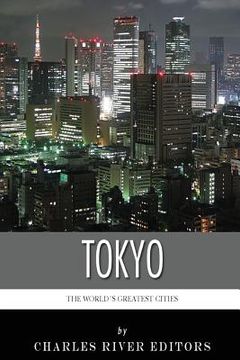Reseña del libro "The World's Greatest Cities: The History of Tokyo (en Inglés)"
*Includes pictures *Chronicles the history of Tokyo over the last several centuries *Includes accounts of what the city was like across the years *Includes a bibliography for further reading After a series of conflicts among feudal lords, the new city of Edo became and remained Japan's beating heart, and in the 17th century, Edo gave birth to a vibrant new urban culture marked by woodblock prints, the kabuki theater, and haiku poetry. By the 18th century, with its ranks swelled thanks to a flood of provincial daimyo, along with their households, clients, and retainers, Edo had become the most populous urban area in the world, a title Tokyo still can lay claim to today. In the latter 19th and 20th centuries, after the Tokugawa bakufu was overthrown by a modernizing and reforming central government under the Meiji emperor, Edo was renamed Tokyo and became Japan's new imperial capital. The Meiji emperor wanted Tokyo to be a vibrant, bustling, cosmopolitan city that could be viewed as a meeting ground between the East and West. He also wanted Tokyo to showcase the bunmei kaika ("civilization and enlightenment") that the new regime trumpeted, and today, Tokyo remains an international center of culture, finance, and media, as well as home to Japan's most prestigious research universities, its most fashionable shopping districts, the headquarters of its wealthiest corporations, and its largest museums. Now covering over 800 square miles, Tokyo's skyline seems endlessly expansive, and it also seems to have taken some of the most noteworthy aspects of other great cities. In Shinjuku ward, Tokyo has skyscrapers that look like they belong in Manhattan, while in Minato, the Tokyo Tower instantly brings to mind the Eiffel Tower. To the west, the ward of Shibuya is full of enough neon lights to make Las Vegas blush, and the National Diet Building in Chiyoda houses Japan's legislature and looks like a capitol building tourists might find across American states. It's no coincidence that nearly half a million foreign expatriates choose to live in Tokyo today. Tokyo is one of the largest metropolises in the world, with over 12 million residents living there and another 2.5 million workers coming each day, and because World War II left much of the city in ruins, Tokyo is now one of the most modern major metropolises on the planet. In fact, the Japanese had determined even before the end of World War II that Tokyo was more like a prefecture (the Japanese version of a county or state) than one city. For that reason, the metropolis of Tokyo is a prefecture that is actually comprised of 23 cities, each of which has political autonomy that allows it to govern in collaboration with Tokyo's metropolitan government. The autonomy afforded to the different cities that make up Tokyo also means that Tokyo as people understand it is remarkably diverse. While Chiyoda attracts the affluent, as well as foreign nationals and tourists, the ward just to the east of it, Chuo, covers less ground but is about three times as dense. Over 30,000 students go to the prestigious Keio University in the neighboring special ward of Minato, helping make Shibuya the hotspot for young adults. Naturally, the kids help make Shibuya Tokyo's best spot for all forms of nightlife entertainment, fashion, and shopping. Meanwhile, the major population centers of Tokyo are the special wards on the outskirts of the metropolis, such as Adachi, Ota, and Edogawa, which cover upwards of 50 square miles by themselves. The World's Greatest Cities: The History of Tokyo chronicles the history of Japan's most famous city.

